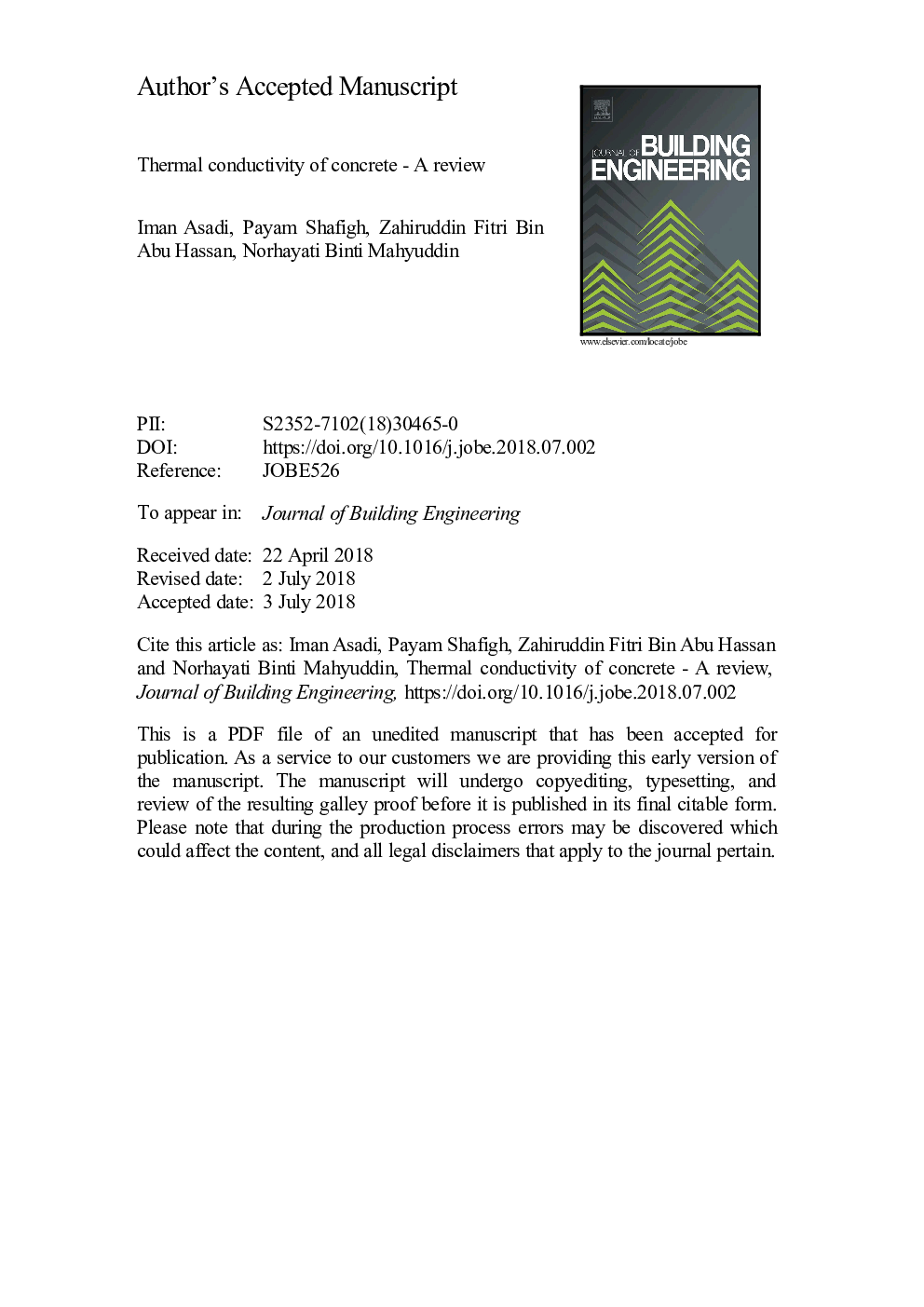| Article ID | Journal | Published Year | Pages | File Type |
|---|---|---|---|---|
| 6749659 | Journal of Building Engineering | 2018 | 36 Pages |
Abstract
The thermal conductivity (k-value) of cement-based materials like concrete is an important factor when considering the amount of heat transfer through conduction. The amount of heat loss through walls and roofs has a direct effect on the energy consumption of buildings. The steady state and transient methods are considered the two main thermal conductivity measurement approaches. The moisture content, temperature, type of aggregate, type of cementitious material and density of concrete are influential factors on the thermal conductivity. The aim of this paper is to review the techniques most commonly used to measure the thermal conductivity of concrete as well as to consider the factors affecting the thermal conductivity of cement-based materials. In addition, a general equation for predicting the thermal conductivity of concrete is proposed in this study based on data reported by researchers. The results of this review indicate that most researchers have measured the k-value of cement-based materials based on transient methods. The reported k-value in saturated conditions is higher than in dry conditions. Moreover, the measured k-value exhibits a declining trend with increasing temperature. It is concluded that using lightweight concrete in structural and non-structural building envelopes is a valuable method of reducing the amount of heat transfer and energy consumption owing to the lower k-value of lightweight concrete compared to normal weight concrete.
Keywords
Related Topics
Physical Sciences and Engineering
Engineering
Civil and Structural Engineering
Authors
Iman Asadi, Payam Shafigh, Zahiruddin Fitri Bin Abu Hassan, Norhayati Binti Mahyuddin,
